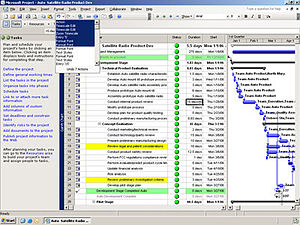
Projects can be extremely difficult for any business to keep track of, whether it’s the budgeting, time management, or personnel involved. In the days before the dawn of the computing era, companies were forced to record and monitor these things on paper, a process which was prone to human error and other intrinsic inefficiencies.
But since computers have become more commonplace and in fact necessary for a business to thrive, an increasing number of companies have turned to project management software in order to make their work easier and reduce the potential for costly mistakes.
The most ubiquitous of these project management programs is Microsoft Project, which was first released in 1984 for the MS-DOS operating system. Offering companies and organizations the ability to monitor the progress of a given event, project, or work order, MS Project laid much of the framework for the project management software suites of the next two decades, though the wheel would be reinvented once again with the advent of cloud-based project management web apps around the turn of the millennium.
At the heart of Microsoft Project is an engine used to track resources and implement smart resource management, whether the resources are people, tools, or physical goods necessary to complete a project. Resources can be pooled and accessed by a variety of groups that might be working on different aspects of a given job.
Users can set the productivity and resource consumption rate of different selections of workers, allowing project managers to estimate a budget going into a project or adjust as variables come up through the duration of the job.
MS Project Still Popular in organizations
MS Project is still available and in widespread usage to this day, most recently as an optional add-on to Microsoft Office 2013. In addition, Microsoft has begun to respond to the market’s demand for more “cloud-centric” products. From Office 365 availability and integration to the save-on-demand SkyDrive features built into most of the Office 2013 applications, it’s clear that the technology giant feels the need to stay up-to-date by attempting to answer its growing cloud-based competition. While Project was practically a one-of-a-kind program back in 1984, now Microsoft is competing in a very crowded marketplace.
As the recession continues and companies feel the squeeze, micromanaging every aspect of a given project to ensure budgets are not being wasted and corners are not being cut is a huge priority right now. To that end, MS Project and the new crop of more cloud-centered project management application suites are thriving and perhaps more in demand today than ever. Regardless of whether Microsoft is able to successfully translate Project to tomorrow’s marketplace, there is no doubt of the program’s worldwide influence on the formation of project management software.
Does your organization need help managing projects more effectively? Workzone offers a powerful, easy-to-use alternative to Microsoft Project for project management.
Related articles








